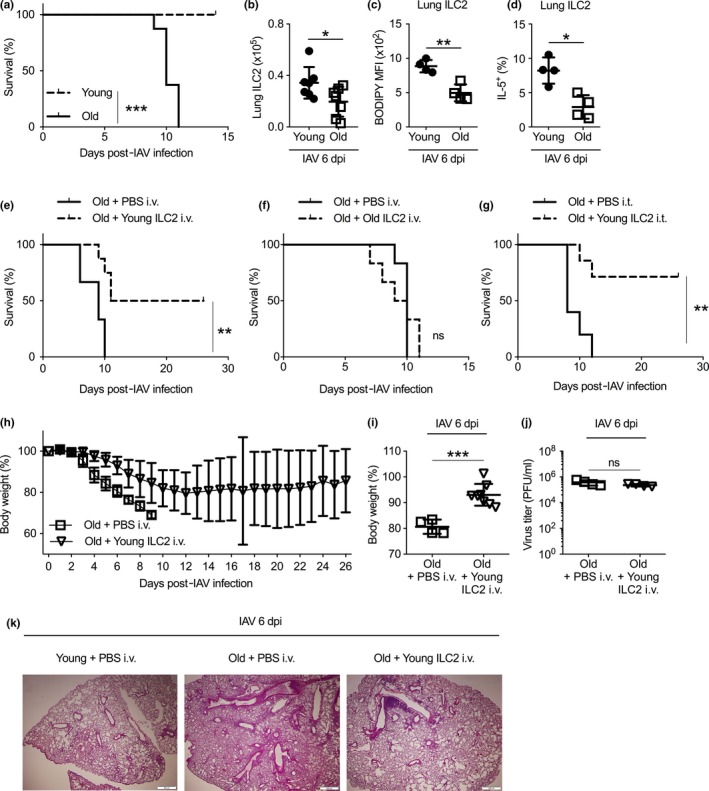Figure 6.

Adoptive transfer of young ILC2 enhanced resistance to influenza infection in old mice. (a) Survival rates were examined for young and old mice infected with 340 PFU of CA04 influenza A virus (IAV). (b) Number of lung ILC2 was examined at day 6 postinfection. (c) Uptake of BODIPY FL C16 by lung ILC2 was examined at day 6 postinfection. (d) IL‐5 expression by lung ILC2 was measured by flow cytometry at day 6 postinfection. (e) Old mice were transferred with sort‐purified lung ILC2 from young donor mice or administrated with PBS control via intravenous injection, and infected with 340 PFU of CA04 IAV. Survival was monitored up to 28 days postinfection. (f) Old mice were transferred with sort‐purified lung ILC2 from old donor mice or administrated with PBS control via intravenous injection, and infected with 340 PFU of CA04 IAV. Survival was monitored. (g) Old mice were transferred with sort‐purified lung ILC2 from young donor mice or administrated with PBS control via intratracheal injection, and infected with 340 PFU of CA04 IAV. Survival was monitored up to 28 days postinfection. (h) Weight loss of IAV‐infected old mice with or without intravenous transfer of young lung ILC2 cells. (i) Weight loss of IAV‐infected old mice at day 6 postinfection with or without intravenous transfer of young lung ILC2 cells. (i) Virus titer of IAV in infected old mice with or without intravenous transfer of young ILC2 cells. (k) Representative H&E staining of the lungs of infected young mice, infected old mice, or infected old mice received intravenous young ILC2 transfer, at day 6 post‐IAV infection. Data are from 8 mice per group (a), or 6 mice per group (e–g), or 4–6 mice per group (b–d, h, i); *, p < 0.05; **, p < 0.01; ***, p < 0.001
